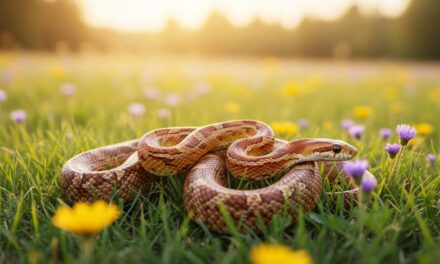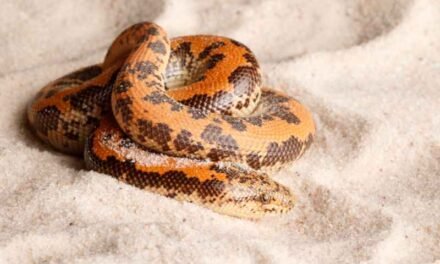When we think of snakes, most of us imagine creatures that slither silently, striking only when provoked or when hunting prey. But the spitting cobra is different. This fascinating snake has developed a unique way of defending itself, which makes it one of nature’s most intriguing and dangerous reptiles. This blog explores the world of the spitting cobra, explaining how it lives, how it uses its venom, and why it is so remarkable.
What is a Spitting Cobra?
A spitting cobra is a type of cobra that has the ability to eject venom from its fangs, not just into a bite, but directly at the eyes of a threat. There are several species of spitting cobras found in Africa and parts of Asia, each with its own unique characteristics. What makes them stand out from other cobras is their specialized way of delivering venom.
The Mechanics of Spitting
Spitting cobras don’t just randomly spray venom. They are highly accurate and can hit a target’s eyes from as far as 6 to 10 feet away. The cobra’s fangs have small holes near the tips that allow the venom to be ejected under pressure. When the snake feels threatened, it rears up, spreads its hood, and spits. The venom is shot out in a fine spray that is aimed precisely at the attacker’s face.
The ability to spit venom evolved as a defensive mechanism. While many snakes rely on biting as a defense, spitting cobras can deter threats without needing to make physical contact. This is particularly useful against larger predators that the cobra might not be able to kill or seriously injure with a bite alone.
The Potency of Cobra Venom
The venom of a spitting cobra is a complex mix of toxins that can cause intense pain and damage. The venom primarily contains neurotoxins and cytotoxins. Neurotoxins attack the nervous system, potentially leading to paralysis, while cytotoxins cause damage to cells, leading to tissue destruction.
When venom is sprayed into the eyes, it can cause immediate pain, blindness (temporary or permanent), and inflammation. The goal of this venom isn’t necessarily to kill, but to incapacitate the attacker long enough for the cobra to escape. The pain from the venom is often so severe that it gives the cobra a crucial few seconds to flee.

Adaptation and Evolution
The spitting ability of these cobras is a fascinating example of evolution. Scientists believe that this adaptation developed because it provided a survival advantage. Over time, cobras that could spit their venom were more likely to survive encounters with predators, and thus, this trait became more common in the species.
Interestingly, not all cobras can spit, and not all spitting cobras spit in the same way. Some species have evolved to spit more effectively than others. This variation suggests that the ability to spit venom is still evolving, with some species refining this skill to better suit their environments.
Habitat and Behavior
Spitting cobras are typically found in diverse habitats ranging from savannas and forests to deserts. They are adaptable snakes that can live in a variety of climates. Their diet mainly consists of small mammals, birds, and other reptiles. When hunting, they use their venom primarily for killing prey rather than for defense.
These snakes are generally shy and will avoid humans whenever possible. However, if cornered or threatened, they will not hesitate to use their spitting ability. This makes them particularly dangerous to people who accidentally stumble upon them. In some regions, spitting cobras are responsible for a significant number of snakebite incidents, though fatalities are rare.
Interaction with Humans
Throughout history, spitting cobras have had a mixed relationship with humans. In many cultures, cobras are revered and feared in equal measure. While their venomous nature has led to a healthy respect for these snakes, their role in controlling pest populations has also been acknowledged.
In some regions, spitting cobras are considered a serious threat, especially in rural areas where people might encounter them more frequently. The fear of being spat at and potentially blinded by these snakes has led to many myths and stories about their deadliness. However, it’s important to remember that spitting cobras do not seek out humans and only use their venom as a last resort.

Conservation Status
The conservation status of spitting cobras varies by species. While some are relatively common and not considered at risk, others face threats from habitat destruction, hunting, and the pet trade. Like many reptiles, spitting cobras play a vital role in their ecosystems, particularly in controlling the populations of small mammals and other prey species.
Efforts are being made to protect these snakes through habitat conservation and education. Understanding and respecting these creatures is key to ensuring that they continue to thrive in the wild.
Conclusion: Respecting the Spitting Cobra
The spitting cobra is more than just a dangerous snake; it’s a marvel of evolution and adaptation. Its ability to accurately spit venom is a unique defense mechanism that sets it apart from other snakes. While its venom can cause significant harm, the spitting cobra is not an aggressive creature by nature. By understanding and respecting this fascinating reptile, we can learn to coexist with it and appreciate the role it plays in the natural world.
Nature’s toxic sniper, the spitting cobra, reminds us of the incredible diversity and ingenuity of life on Earth. Each species has its own way of surviving and thriving, and the spitting cobra’s story is one of survival through precision, adaptation, and the power of venom.





